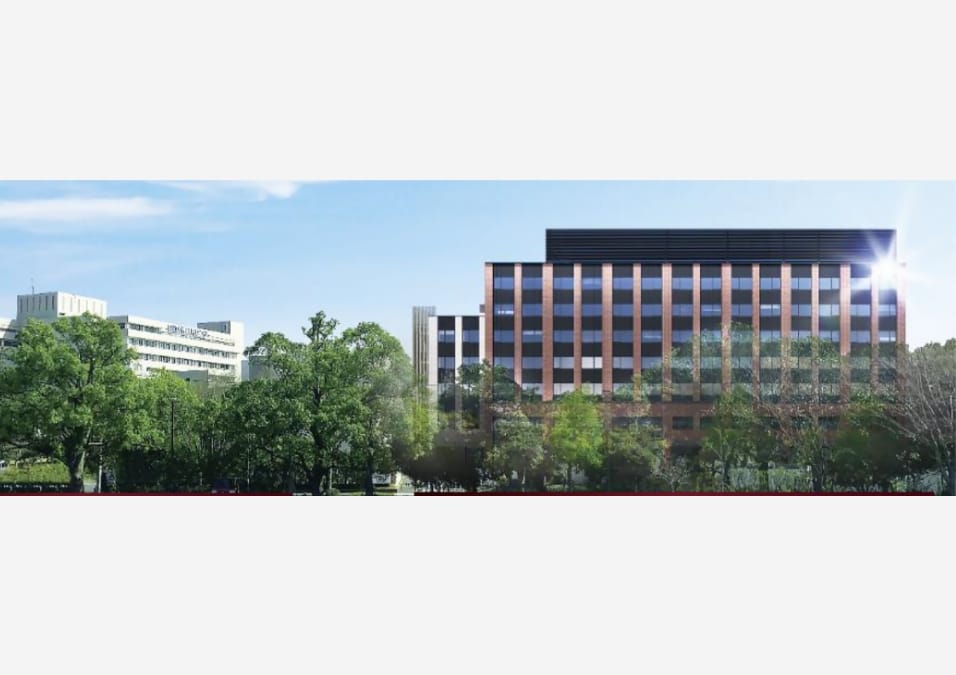| Contribute to industrial competitiveness |
Strengthening industrial competitiveness
'Initiatives that contribute to the creation of added value for society by supporting people's lifestyles and diverse corporate activities.'
|
Annual disclosure of initiatives |
- |
- |
- |
- |
- |
- |
Disclosure in the Sustainability Report |
Challenging towards expanding new fields
'Initiatives that contribute to the creation of new industries by enhancing the industrial creation platform.'
|
| Coexist with the environment *1 |
Progress of the Group Action Plan to realize a Decarbonized Society |
Annual disclosure of initiatives |
- |
- |
- |
- |
- |
- |
Disclosure in the Sustainability Report |
Increase in green space, forest utilization
'Initiatives to increace urban greenery through development and to regenerate Japan's forests.'
|
| CO2 and other emission reduction rate (1,000 t-CO2) |
By FY2030
By FY2050 |
: 40% decrease compared to FY2019
: Virtually zero |
4,383 |
4,690 |
4,199 |
5,503 |
3,941 |
4,602 |
Compared to FY2019:
+5.0% |
| Proportion of electric power used in business activities derived from renewable energy (RE100) |
By FY2050 |
100% |
0.1% |
0.1% |
3.0% |
8.1% |
12.7% |
33.8% |
|
| New building external environment certification acquisition rate*3 |
Annual |
100% |
- |
- |
- |
- |
100% |
100% |
|
Energy consumption per base unit
(kℓ/m2 per year) *4 |
Annual |
1% reduction annually |
(0.041) |
(0.035) |
(0.039) |
(0.039) |
(0.038)
0.034 |
(0.038)
Under calculation |
- |
Clean/industrial water use per base unit
(m3/m2 per year) |
Annual |
Less than the previous fiscal year |
0.851 |
0.708 |
0.671 |
0.855 |
0.871 |
0.837 |
- |
General waste emissions per base unit
(t/m2 per year) |
Annual |
0.0055 |
0.0044 |
0.0055 |
0.0059 |
0.0059 |
0.0057 |
Industrial waste emissions per base unit
(t/m2 per year) |
Annual |
0.0016 |
0.0010 |
0.0011 |
0.0016 |
0.0016 |
0.0015 |
| Waste recycling ratio (at Mitsui Fudosan Co., Ltd. headquarters) |
By FY2030 |
90% |
80.3% |
75.3% |
72.4% |
69.4% |
78.2% |
78.8% |
|
| Health and vitality *2 |
Improving experiential value
'Initiatives towards creating neighborhood that people are inspired to visit by delivering an emotional experience.'
|
Annual disclosure of initiatives |
- |
- |
- |
- |
- |
- |
Disclosure in the Sustainability Report |
Realizing a Well-Being Society
'Initiatives to realize a healthy and vibrant society for workers and visitors.'
|
| Number of paid leave days taken |
Annual |
14 days annually |
14.9 days |
13.8 days |
15.0 days |
16.2 days |
16.2
days |
15.7
days |
- |
| Health checkup and screening rate |
Annual |
100% |
99.8% |
99.5% |
100% |
100% |
100% |
100% |
|
| Safety and security |
Safety and security
'Initiatives to realize a safe and secure society from both tangible and intangible perspectives.'
|
Annual disclosure of initiatives |
- |
- |
- |
- |
- |
- |
Disclosure in the Sustainability Report |
| Implementation of disaster preparedness training, including tenant companies |
Biannual implementation |
- |
- |
- |
- |
Biannual implementation |
Biannual implementation |
|
| Diversity and inclusion *2 |
Realizing an inclusive society
'Initiatives to realize a society in which all people can maximize their abilities and play an active role.'
|
Annual disclosure of initiatives |
- |
- |
- |
- |
- |
- |
Disclosure in the Sustainability Report |
| Employee engagement *5 |
Annual |
80%
or more |
- |
- |
- |
92% |
92% |
92% |
|
| Training time per employee *6 |
Annual |
Same level as previous year's results |
- |
- |
- |
28.2 hours |
28.4
hours |
32.2
hours |
|
| Training expenses per employee *7 |
Annual |
Same level as previous year's results |
- |
- |
- |
131,000 yen |
132,000 yen |
134,000 yen |
|
| Women in management positions ratio *8 |
By 2025
By 2030 |
:10%
:20% |
4.5% |
5.7% |
6.8% |
7.7% |
9.2% |
10.2% |
|
| Ratio of female hires |
Annual |
40% |
- |
- |
40.5% |
44.1% |
48.6% |
41.2% |
|
| Employment rate of people with disabilities (legal employment rate) *9 |
Annual |
2.5%
or more |
2.04% |
2.07% |
2.14% |
2.52% |
2.74% |
2.74% |
|
| Percentage of male employees taking childcare leave, etc *10 |
Annual |
100% |
- |
- |
- |
122.9% |
116.6% |
100% |
|
| Return rate from childcare leave |
Annual |
100% |
100% |
100% |
100% |
100% |
100% |
100% |
|
| Compliance and governance |
Compliance training attendance ratio *2 |
Annual |
100% |
- |
- |
- |
- |
99.5% |
100% |
|
| Implementation and enhancement of Human Rights Due Diligence |
Annual |
- |
- |
- |
- |
Annual |
Annual |
|
































